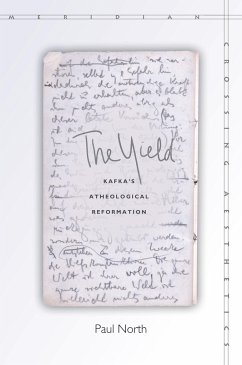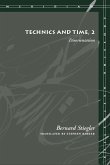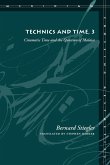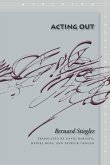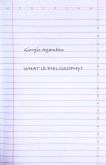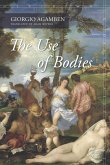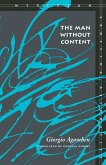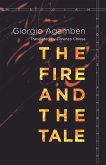- Broschiertes Buch
- Merkliste
- Auf die Merkliste
- Bewerten Bewerten
- Teilen
- Produkt teilen
- Produkterinnerung
- Produkterinnerung
The book offers the first systematic analysis of Kafka's only work of nonfiction, the so-called ZÃ rau fragments, and develops his proposals there for a controversial solution to human suffering and the drive toward moral betterment.
Andere Kunden interessierten sich auch für
![Technics and Time, 2 Technics and Time, 2]() Bernard StieglerTechnics and Time, 238,99 €
Bernard StieglerTechnics and Time, 238,99 €![Technics and Time, 3 Technics and Time, 3]() Bernard StieglerTechnics and Time, 338,99 €
Bernard StieglerTechnics and Time, 338,99 €![Acting Out Acting Out]() Bernard StieglerActing Out26,99 €
Bernard StieglerActing Out26,99 €![What Is Philosophy? What Is Philosophy?]() Giorgio AgambenWhat Is Philosophy?26,99 €
Giorgio AgambenWhat Is Philosophy?26,99 €![The Use of Bodies The Use of Bodies]() Giorgio AgambenThe Use of Bodies32,99 €
Giorgio AgambenThe Use of Bodies32,99 €![The Man Without Content The Man Without Content]() Giorgio AgambenThe Man Without Content30,99 €
Giorgio AgambenThe Man Without Content30,99 €![The Fire and the Tale The Fire and the Tale]() Giorgio AgambenThe Fire and the Tale25,99 €
Giorgio AgambenThe Fire and the Tale25,99 €-
-
-
The book offers the first systematic analysis of Kafka's only work of nonfiction, the so-called ZÃ rau fragments, and develops his proposals there for a controversial solution to human suffering and the drive toward moral betterment.
Hinweis: Dieser Artikel kann nur an eine deutsche Lieferadresse ausgeliefert werden.
Hinweis: Dieser Artikel kann nur an eine deutsche Lieferadresse ausgeliefert werden.
Produktdetails
- Produktdetails
- Meridian: Crossing Aesthetics
- Verlag: Stanford University Press
- Seitenzahl: 400
- Erscheinungstermin: 30. September 2015
- Englisch
- Abmessung: 228mm x 153mm x 22mm
- Gewicht: 602g
- ISBN-13: 9780804796590
- ISBN-10: 0804796599
- Artikelnr.: 42787142
- Herstellerkennzeichnung
- Libri GmbH
- Europaallee 1
- 36244 Bad Hersfeld
- gpsr@libri.de
- Meridian: Crossing Aesthetics
- Verlag: Stanford University Press
- Seitenzahl: 400
- Erscheinungstermin: 30. September 2015
- Englisch
- Abmessung: 228mm x 153mm x 22mm
- Gewicht: 602g
- ISBN-13: 9780804796590
- ISBN-10: 0804796599
- Artikelnr.: 42787142
- Herstellerkennzeichnung
- Libri GmbH
- Europaallee 1
- 36244 Bad Hersfeld
- gpsr@libri.de
Paul North is Professor of German at Yale University and author of The Problem of Distraction (Stanford, 2012).
Contents and Abstracts
Introduction: Introduction
chapter abstract
The introduction describes the historical and intellectual contexts for the
composition of the "thoughts" Kafka wrote in the winter of 1917-18. It
offers an analysis of the genre of these texts and locates Kafka's models
for it. At a point in history when the category "Jew" had lost a lot of its
meaning for those in Kafka's milieu, Kafka turned to the Book of Genesis to
construct a new Judaism out of the contradictions in the originary legends.
He does this, following the example of Pascal, in the format of "thoughts,"
though Kafka's aim not to console but to terrify. The thoughts are
intricately interconnected such that they have to be read traversely.
1Refutation of What Being Never Was
chapter abstract
Unlike Martin Heidegger ten years later, Kafka wants to eradicate "being"
from our conceptual vocabulary. This division demonstrates Kafka's
arguments for why being is equivalent to "having" in the Western tradition,
and the division then gives Kafka's analysis a genealogy, tracing the
hidden presence of "having" and "possession" in conceptualizations of being
from Aristotle to Kant, paying special attention to the construction of
tables of categories. It demonstrates how Kafka exposes the "possessive"
undergirding of language and in the concepts of things and of the self.
2Better Weapons Than Faith and Hope
chapter abstract
The set of "thoughts" treated in this division exposes the dependence of
the sequential, directional time concept on the attitude of faith and
proposes various experiments to lead us to drop our concept of time.
Antinomies of the garden of Eden and of the messianic idea are presented in
order to frustrate faith and lead to a milieu with no time.
3The Problem of Our Art
chapter abstract
This division presents Kafka's claim that human beings never die-there is
no evidence that they are finite, although this does not mean they are
immortal. Kafka imagines a third alternative, an indefinite finitude.
Kafka's critique of temporality challenges us to think of ways to live when
life means something like "being indefinite," rather than being certainly
defined by an ultimate limit, whether the other side is heaven or
nothingness. Death is treated as an image, an illusion, and the rest of the
chapter describes Kafka's critical techniques for working with images such
as the image of death, in order that they lose their hypnotic power over
human beings.
4The Yield: On Forgoing Power
chapter abstract
This division presents Kafka's critique of the will, with reference to
Nietzsche and also briefly to Schopenhauer. On one hand the division
describes the ontological basis for a world without power. Kafka's cosmos
has no room for any becoming; everything can be no more than it is, and so
it cannot use power to become something it is not. On the other hand, for
anything to be anything depends on a prior yielding. After a critique of
Nietzsche's obsession with struggle and a critique of Heidegger's own
critique of the will, the chapter describes Kafka's attempt to articulate
how human beings come to yield and what a world of yielding beings looks
like.
Introduction: Introduction
chapter abstract
The introduction describes the historical and intellectual contexts for the
composition of the "thoughts" Kafka wrote in the winter of 1917-18. It
offers an analysis of the genre of these texts and locates Kafka's models
for it. At a point in history when the category "Jew" had lost a lot of its
meaning for those in Kafka's milieu, Kafka turned to the Book of Genesis to
construct a new Judaism out of the contradictions in the originary legends.
He does this, following the example of Pascal, in the format of "thoughts,"
though Kafka's aim not to console but to terrify. The thoughts are
intricately interconnected such that they have to be read traversely.
1Refutation of What Being Never Was
chapter abstract
Unlike Martin Heidegger ten years later, Kafka wants to eradicate "being"
from our conceptual vocabulary. This division demonstrates Kafka's
arguments for why being is equivalent to "having" in the Western tradition,
and the division then gives Kafka's analysis a genealogy, tracing the
hidden presence of "having" and "possession" in conceptualizations of being
from Aristotle to Kant, paying special attention to the construction of
tables of categories. It demonstrates how Kafka exposes the "possessive"
undergirding of language and in the concepts of things and of the self.
2Better Weapons Than Faith and Hope
chapter abstract
The set of "thoughts" treated in this division exposes the dependence of
the sequential, directional time concept on the attitude of faith and
proposes various experiments to lead us to drop our concept of time.
Antinomies of the garden of Eden and of the messianic idea are presented in
order to frustrate faith and lead to a milieu with no time.
3The Problem of Our Art
chapter abstract
This division presents Kafka's claim that human beings never die-there is
no evidence that they are finite, although this does not mean they are
immortal. Kafka imagines a third alternative, an indefinite finitude.
Kafka's critique of temporality challenges us to think of ways to live when
life means something like "being indefinite," rather than being certainly
defined by an ultimate limit, whether the other side is heaven or
nothingness. Death is treated as an image, an illusion, and the rest of the
chapter describes Kafka's critical techniques for working with images such
as the image of death, in order that they lose their hypnotic power over
human beings.
4The Yield: On Forgoing Power
chapter abstract
This division presents Kafka's critique of the will, with reference to
Nietzsche and also briefly to Schopenhauer. On one hand the division
describes the ontological basis for a world without power. Kafka's cosmos
has no room for any becoming; everything can be no more than it is, and so
it cannot use power to become something it is not. On the other hand, for
anything to be anything depends on a prior yielding. After a critique of
Nietzsche's obsession with struggle and a critique of Heidegger's own
critique of the will, the chapter describes Kafka's attempt to articulate
how human beings come to yield and what a world of yielding beings looks
like.
Contents and Abstracts
Introduction: Introduction
chapter abstract
The introduction describes the historical and intellectual contexts for the
composition of the "thoughts" Kafka wrote in the winter of 1917-18. It
offers an analysis of the genre of these texts and locates Kafka's models
for it. At a point in history when the category "Jew" had lost a lot of its
meaning for those in Kafka's milieu, Kafka turned to the Book of Genesis to
construct a new Judaism out of the contradictions in the originary legends.
He does this, following the example of Pascal, in the format of "thoughts,"
though Kafka's aim not to console but to terrify. The thoughts are
intricately interconnected such that they have to be read traversely.
1Refutation of What Being Never Was
chapter abstract
Unlike Martin Heidegger ten years later, Kafka wants to eradicate "being"
from our conceptual vocabulary. This division demonstrates Kafka's
arguments for why being is equivalent to "having" in the Western tradition,
and the division then gives Kafka's analysis a genealogy, tracing the
hidden presence of "having" and "possession" in conceptualizations of being
from Aristotle to Kant, paying special attention to the construction of
tables of categories. It demonstrates how Kafka exposes the "possessive"
undergirding of language and in the concepts of things and of the self.
2Better Weapons Than Faith and Hope
chapter abstract
The set of "thoughts" treated in this division exposes the dependence of
the sequential, directional time concept on the attitude of faith and
proposes various experiments to lead us to drop our concept of time.
Antinomies of the garden of Eden and of the messianic idea are presented in
order to frustrate faith and lead to a milieu with no time.
3The Problem of Our Art
chapter abstract
This division presents Kafka's claim that human beings never die-there is
no evidence that they are finite, although this does not mean they are
immortal. Kafka imagines a third alternative, an indefinite finitude.
Kafka's critique of temporality challenges us to think of ways to live when
life means something like "being indefinite," rather than being certainly
defined by an ultimate limit, whether the other side is heaven or
nothingness. Death is treated as an image, an illusion, and the rest of the
chapter describes Kafka's critical techniques for working with images such
as the image of death, in order that they lose their hypnotic power over
human beings.
4The Yield: On Forgoing Power
chapter abstract
This division presents Kafka's critique of the will, with reference to
Nietzsche and also briefly to Schopenhauer. On one hand the division
describes the ontological basis for a world without power. Kafka's cosmos
has no room for any becoming; everything can be no more than it is, and so
it cannot use power to become something it is not. On the other hand, for
anything to be anything depends on a prior yielding. After a critique of
Nietzsche's obsession with struggle and a critique of Heidegger's own
critique of the will, the chapter describes Kafka's attempt to articulate
how human beings come to yield and what a world of yielding beings looks
like.
Introduction: Introduction
chapter abstract
The introduction describes the historical and intellectual contexts for the
composition of the "thoughts" Kafka wrote in the winter of 1917-18. It
offers an analysis of the genre of these texts and locates Kafka's models
for it. At a point in history when the category "Jew" had lost a lot of its
meaning for those in Kafka's milieu, Kafka turned to the Book of Genesis to
construct a new Judaism out of the contradictions in the originary legends.
He does this, following the example of Pascal, in the format of "thoughts,"
though Kafka's aim not to console but to terrify. The thoughts are
intricately interconnected such that they have to be read traversely.
1Refutation of What Being Never Was
chapter abstract
Unlike Martin Heidegger ten years later, Kafka wants to eradicate "being"
from our conceptual vocabulary. This division demonstrates Kafka's
arguments for why being is equivalent to "having" in the Western tradition,
and the division then gives Kafka's analysis a genealogy, tracing the
hidden presence of "having" and "possession" in conceptualizations of being
from Aristotle to Kant, paying special attention to the construction of
tables of categories. It demonstrates how Kafka exposes the "possessive"
undergirding of language and in the concepts of things and of the self.
2Better Weapons Than Faith and Hope
chapter abstract
The set of "thoughts" treated in this division exposes the dependence of
the sequential, directional time concept on the attitude of faith and
proposes various experiments to lead us to drop our concept of time.
Antinomies of the garden of Eden and of the messianic idea are presented in
order to frustrate faith and lead to a milieu with no time.
3The Problem of Our Art
chapter abstract
This division presents Kafka's claim that human beings never die-there is
no evidence that they are finite, although this does not mean they are
immortal. Kafka imagines a third alternative, an indefinite finitude.
Kafka's critique of temporality challenges us to think of ways to live when
life means something like "being indefinite," rather than being certainly
defined by an ultimate limit, whether the other side is heaven or
nothingness. Death is treated as an image, an illusion, and the rest of the
chapter describes Kafka's critical techniques for working with images such
as the image of death, in order that they lose their hypnotic power over
human beings.
4The Yield: On Forgoing Power
chapter abstract
This division presents Kafka's critique of the will, with reference to
Nietzsche and also briefly to Schopenhauer. On one hand the division
describes the ontological basis for a world without power. Kafka's cosmos
has no room for any becoming; everything can be no more than it is, and so
it cannot use power to become something it is not. On the other hand, for
anything to be anything depends on a prior yielding. After a critique of
Nietzsche's obsession with struggle and a critique of Heidegger's own
critique of the will, the chapter describes Kafka's attempt to articulate
how human beings come to yield and what a world of yielding beings looks
like.

